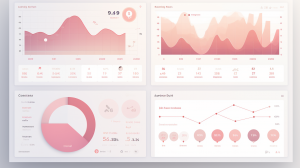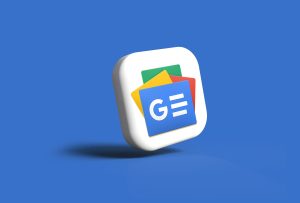Level: Intermediate
Creating long slide decks can be time-consuming, but with Claude Sonnet, the process becomes much smoother.
In this guide, we’ll walk you through the steps to efficiently build engaging, comprehensive slide decks using Claude Sonnet’s user-friendly features, and be able to import them into Google Slides, and do it all in 5 minutes. I used this process to rush a presentation last minute and it worked very well.
Whether you’re preparing a presentation for work or a detailed project, this workflow will help you streamline your efforts!
1. Create a slide deck with template data that can be replaced.
Use app scripts to do this:
For title and 3 bullet points in slides:
function createSlidesWithTitleAndBullets() {
var presentationId = "CHANGE TO PRESENTATION ID"; // Provided Presentation ID
var presentation = SlidesApp.openById(presentationId);
// Define the format for title and bullet placeholders
var titlePlaceholder = "{{slide{number}_title}}";
var bullet1Placeholder = "• " + "{{slide{number}_bullet1}}"; // Use bullet symbol
var bullet2Placeholder = "• " + "{{slide{number}_bullet2}}";
var bullet3Placeholder = "• " + "{{slide{number}_bullet3}}";
// Start from the second slide (since the first already exists)
for (var i = 2; i <= 10; i++) { // Adjust the loop for the number of slides you need
// Create a new slide using the default TITLE_ONLY layout
var slide = presentation.appendSlide(SlidesApp.PredefinedLayout.TITLE_ONLY);
// Set the title text in the centered title placeholder
var titleShape = slide.getPlaceholder(SlidesApp.PlaceholderType.TITLE);
if (titleShape) {
titleShape.asShape().getText().setText(titlePlaceholder.replace("{number}", i));
}
// Create a new text box below the title for bullet points
var bulletTextBox = slide.insertTextBox("", 100, 200, 400, 150); // Position and size of the text box
// Insert bullet points as a single block of text using bullet symbols
bulletTextBox.getText().setText(
bullet1Placeholder.replace("{number}", i) + "\n" +
bullet2Placeholder.replace("{number}", i) + "\n" +
bullet3Placeholder.replace("{number}", i)
);
}
}
You should get an output like this:
You can just use that template, but I documented it so you can play with different styles as we could greatly improve this.
2. Use the projects ‘webinar’ app which is trained on writing webinars.
Once you have a great outline and you are happy, you are ready for step 3.
Providing Claude with Instructions
We trained our Claude project with loads of useful info on building an effective webinar.
You can actually copy and paste our entire article on Alex Hormozi’s webinar persuasion techniques into Claude as instructions to follow when creating a slide deck.
You can also attach your product’s sales page; this lets Claude pull in key details and benefits, making the slides more focused and persuasive.
Here’s a simple prompt you can use in Claude:
You are a talented sales webinar script writer. Create the entire slide deck outline in simple text format with title, and 3 bullets per slide. Provide the output in markdown format. The slide deck to create is about [X], and I'd like you to focus on [Y]. Create over 100 slides. I've also attached information on the product for inspiration.3. Then ask for the webinar presentation in a CSV format like follows:
Title and sentence:
{{title}},This is the title {{subtitle}},This is the subtitle {{slide1_title}},This is the title of the first slide {{slide1_body}},This is the body of the first slide {{slide2_title}},This is the title of the second slide {{slide2_body}},This is the body of the second slideOr:
Title & 3 bullet points:
{{title}},This is the title {{subtitle}},This is the subtitle {{slide1_title}},This is the title of the first slide {{slide1_bullet1}},This is the first bullet point of the first slide {{slide1_bullet2}},This is the second bullet point of the first slide {{slide1_bullet3}},This is the third bullet point of the first slide {{slide2_title}},This is the title of the second slide {{slide2_bullet1}},This is the first bullet point of the second slide {{slide2_bullet2}},This is the second bullet point of the second slide {{slide2_bullet3}},This is the third bullet point of the second slide {{slide3_title}},This is the title of the third slide {{slide3_bullet1}},This is the first bullet point of the third slide {{slide3_bullet2}},This is the second bullet point of the third slide {{slide3_bullet3}},This is the third bullet point of the third slide
It’s unlikely you get a complete file and may need to piece it together for a long presentation.
Once done open the CSV file in Google Sheets.
4. Within that Google Sheet Go to Extensions > Ad Scripts
Now run the code:
function fillTemplate() {
// Id of the slides template
// Remember to replace this with the Id of your presentation
var PRESENTATION_ID = "CHANGE TO PRESENTATION ID";
// Open the presentation
var presentation = SlidesApp.openById(PRESENTATION_ID);
// Read data from the spreadsheet
var values = SpreadsheetApp.getActive().getDataRange().getValues();
// Replace template variables in the presentation with values
values.forEach(function(row) {
var templateVariable = row[0]; // First column contains variable names
var templateValue = row[1]; // Second column contains values
presentation.replaceAllText(templateVariable, templateValue);
});
}This code will then use your Google Sheet and insert the data into the chosen Google Slide template.
Or you can watch the entire process of creating slide decks using Claude in this video!
Wrapping it All Up
Once you have your template set up you can quickly create draft slidedecks inside of Claude and import into Google Slides easily (and even save as a powerpoint from Google Slides). Then it is just a case of refining. Another alternative for creating slide decks with AI is Gamma.app.
Once you have all that content, its worthwhile putting the word out. Fortunately, with AmpiFire, sharing yuor content ideas in various formats like slideshows, news articles, blog posts, infographics, podcasts, and videos is effortless.
Our powerful content amplification tool increases your reach by distributing these campaigns, known as “Amps,” across high-traffic sites, blogs, and social media.
Book an appointment with AmpiFire today.
Author
-
CEO and Co-Founder at AmpiFire. Book a call with the team by clicking the link below.
Related Posts

Does Google Hate AI Content? ChatGPT’s Stance on Detection, SEO, Indexing, & Duplicate Penalties
Learn how Google views AI Chat GPT content through the lens of Chat GPT. Discover the impact of indexing, duplicate…

How To Nail Your News Summary & Boost Your Google Ranking Chances? [Infographic]
The summary is the first impression of your news article and determines whether readers will keep reading or move on…

How To Fix Your Online Reputation & Get A Second Chance With Google
Google is the most popular search engine on the planet, and for good reason. With over 8.5 billion searches every…

How To Increase Your Google Maps Rankings with AmpiFire’s Citation Building Services?
Explore how AmpiFire's citation building services can enhance Google Maps rankings for local businesses and attract more customers.

Setting Up Google Analytics on BigCommerce: Ultimate Guide & Checklist
Get actionable insights and data-driven success with this guide to integrating Google Analytics 4 with BigCommerce.

How to Submit a Press Release to Google News
Learn how to submit a press release to Google News and boost your online presence with these essential steps.










